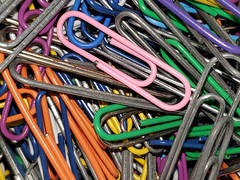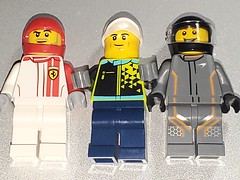 Home. Home is where the heart is, or so said Pliny the Elder. Home might make us think of four walls, the sounds of family, or a community group. Maya Angelou said the home is “the safe place where we can go as we are and not be questioned.” The word can simultaneously evoke memories of the past, thoughts of the present, and perhaps visions of the future. However, the sentiments expressed by American poet Muriel Rukeyser seem the most accurate to me: The journey is my home.
Home. Home is where the heart is, or so said Pliny the Elder. Home might make us think of four walls, the sounds of family, or a community group. Maya Angelou said the home is “the safe place where we can go as we are and not be questioned.” The word can simultaneously evoke memories of the past, thoughts of the present, and perhaps visions of the future. However, the sentiments expressed by American poet Muriel Rukeyser seem the most accurate to me: The journey is my home.
 The cost is significant. A lot of energy and effort gets wasted trying to be someone or something else we’re not. Angst builds up a lot from not meeting someone else’s expectations or being overly concerned about how someone sees or thinks of us. Frustration simmers when you feel like you’re not being heard or seen. But there’s a simple solution: just do you.
The cost is significant. A lot of energy and effort gets wasted trying to be someone or something else we’re not. Angst builds up a lot from not meeting someone else’s expectations or being overly concerned about how someone sees or thinks of us. Frustration simmers when you feel like you’re not being heard or seen. But there’s a simple solution: just do you.
 Imagine a class of 1st-grade students left unattended in a room with crayons, markers, sketchbooks, finger paints - and a healthy dose of their creativity. When left to their own devices, there would be a whirlwind of activity as they explore their world in a non-linear fashion. There are no rules to using crayons nor expectations for an artistic genius in the making. In the midst of this tsunami of activity, they were building the foundation for life-long learning. But then, something dramatic happened.
Imagine a class of 1st-grade students left unattended in a room with crayons, markers, sketchbooks, finger paints - and a healthy dose of their creativity. When left to their own devices, there would be a whirlwind of activity as they explore their world in a non-linear fashion. There are no rules to using crayons nor expectations for an artistic genius in the making. In the midst of this tsunami of activity, they were building the foundation for life-long learning. But then, something dramatic happened.
 One of the most pervasive themes in education is that of the learning style. For those new to the topic, the word on the street is that everyone has one of three learning styles, be that auditory, visual, or kinesthetic. If you’re a student, it is widely reported that you learn more effectively when using your preferred learning style. As an instructor, the task is to present content that addresses all of the learning styles in the classroom. The same thinking could hold true with patients in the clinic - they are just students of another realm. However, the more we talk about this, the more we perpetuate one of the greatest myths in education.
One of the most pervasive themes in education is that of the learning style. For those new to the topic, the word on the street is that everyone has one of three learning styles, be that auditory, visual, or kinesthetic. If you’re a student, it is widely reported that you learn more effectively when using your preferred learning style. As an instructor, the task is to present content that addresses all of the learning styles in the classroom. The same thinking could hold true with patients in the clinic - they are just students of another realm. However, the more we talk about this, the more we perpetuate one of the greatest myths in education.
 Every May, I take a moment to reflect on the passing of Robin McKenzie, an individual that has had a profound impact on the world as I know it. It is hard to fathom that he left us in 2013; a decade has passed in a heartbeat, it seems. Sadly, I remember the day like it was yesterday. I have a daily reminder that sits at the top of my inbox - an email from 2008 from Robin himself with his personal comments about my book, “RunSmart.” The passage of time always puts life’s moments into greater perspective, and with this in mind, I share my reflections on McKenzie ten years on.
Every May, I take a moment to reflect on the passing of Robin McKenzie, an individual that has had a profound impact on the world as I know it. It is hard to fathom that he left us in 2013; a decade has passed in a heartbeat, it seems. Sadly, I remember the day like it was yesterday. I have a daily reminder that sits at the top of my inbox - an email from 2008 from Robin himself with his personal comments about my book, “RunSmart.” The passage of time always puts life’s moments into greater perspective, and with this in mind, I share my reflections on McKenzie ten years on.
 Life is full of choices. Frost had to choose between the road less traveled and the road traveled. Neo had to choose between the red pill and the blue pill. Mere mortals like myself have to choose between the right and left fork in the road ahead. Every day presents us with choices and decisions that need to be made. And in the words of Rush, even if you choose not to decide, you still have made a choice. With each choice and decision comes an outcome, a ramification of some form or another - many of which will make us happy, and many of which will make us sad. Choices, choices, and more choices. But we’re then faced with another choice, and that’s where the real challenge is found.
Life is full of choices. Frost had to choose between the road less traveled and the road traveled. Neo had to choose between the red pill and the blue pill. Mere mortals like myself have to choose between the right and left fork in the road ahead. Every day presents us with choices and decisions that need to be made. And in the words of Rush, even if you choose not to decide, you still have made a choice. With each choice and decision comes an outcome, a ramification of some form or another - many of which will make us happy, and many of which will make us sad. Choices, choices, and more choices. But we’re then faced with another choice, and that’s where the real challenge is found.
 In health care, we talk a lot about evidence-based practice or its younger brother, evidence-informed practice. Aligned with this, we have developed what is now known as the three-legged stool of evidence-based practice. The now-legendary three legs of the proverbial stool include research evidence, clinical expertise, and patients' values, needs, and preferences. However, what has been forgotten in this whole construct is that any good stool is useless unless it stands upon a sound foundation, or as Newton would have it, “standing on the shoulders of giants”. Let’s call them the Three Amigos.
In health care, we talk a lot about evidence-based practice or its younger brother, evidence-informed practice. Aligned with this, we have developed what is now known as the three-legged stool of evidence-based practice. The now-legendary three legs of the proverbial stool include research evidence, clinical expertise, and patients' values, needs, and preferences. However, what has been forgotten in this whole construct is that any good stool is useless unless it stands upon a sound foundation, or as Newton would have it, “standing on the shoulders of giants”. Let’s call them the Three Amigos.
 "Running Injuries: Etiology And Recovery- Based Treatment" (co-author Bridget Clark, PT) appears in the third edition and fourth editions of "Clinical Orthopaedic Rehabilitation: A Team Approach" by Charles Giangarra, MD and Robert C. Manske, PT.
"Running Injuries: Etiology And Recovery- Based Treatment" (co-author Bridget Clark, PT) appears in the third edition and fourth editions of "Clinical Orthopaedic Rehabilitation: A Team Approach" by Charles Giangarra, MD and Robert C. Manske, PT.
 Allan Besselink, PT, DPT, Ph.D., Dip.MDT has a unique voice in the world of sports, education, and health care. Read more about Allan here.
Allan Besselink, PT, DPT, Ph.D., Dip.MDT has a unique voice in the world of sports, education, and health care. Read more about Allan here.
 Top 5 finalist in three categories: "Best Overall Blog", "Best PT Blog" and "Best Advocacy Blog".
Top 5 finalist in three categories: "Best Overall Blog", "Best PT Blog" and "Best Advocacy Blog".